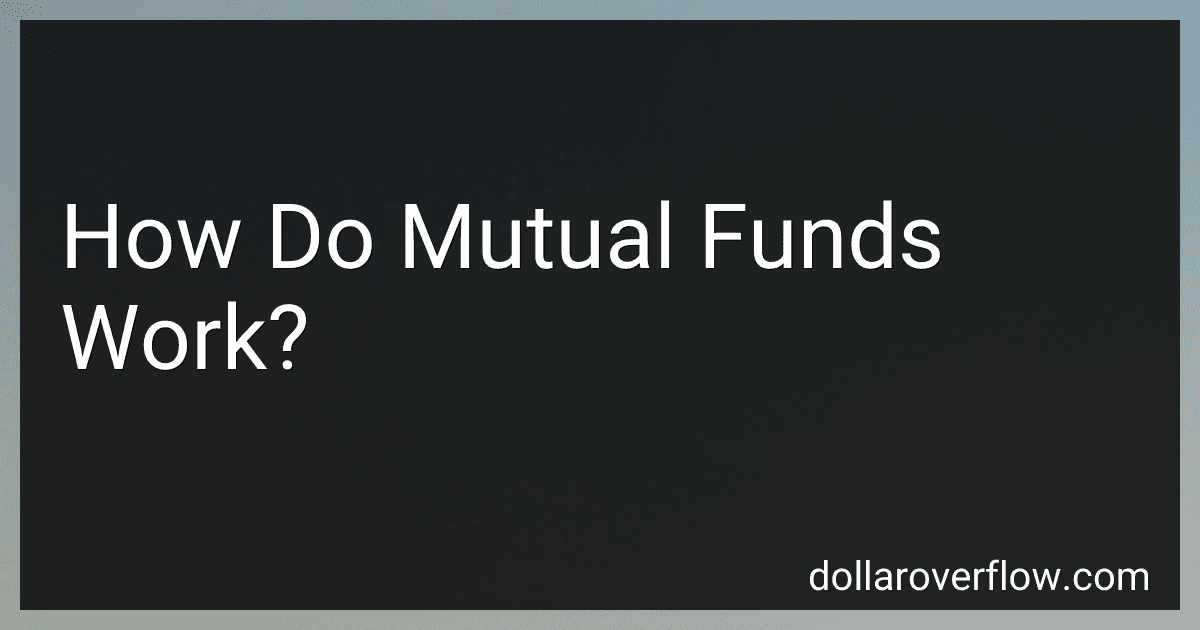Best Mutual Funds to Buy in December 2025
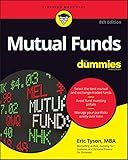
Mutual Funds For Dummies


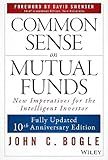
Common Sense on Mutual Funds, Updated 10th Anniversary Edition


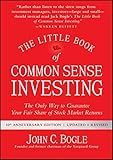
The Little Book of Common Sense Investing: The Only Way to Guarantee Your Fair Share of Stock Market Returns (Little Books. Big Profits)
- SECURE PACKAGING ENSURES SAFE DELIVERY EVERY TIME.
- EASY-TO-READ TEXT ENHANCES USER EXPERIENCE AND CLARITY.
- PERFECT AS A THOUGHTFUL GIFT OPTION FOR ANY OCCASION.


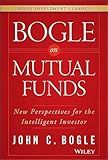
Bogle On Mutual Funds: New Perspectives For The Intelligent Investor (Wiley Investment Classics)



Mutual Funds for Dummies


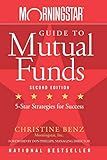
Morningstar Guide to Mutual Funds: Five-Star Strategies for Success


Mutual funds are investment vehicles that pool money from multiple investors to invest in a diversified portfolio of securities such as stocks, bonds, and other assets. These funds are managed by professional fund managers or investment firms.
When you invest in a mutual fund, you're essentially buying shares of that fund. Each share represents a proportional ownership in the underlying assets held by the fund. The value of each share is determined by the net asset value (NAV) of the fund, which is calculated at the end of each trading day.
Investors can purchase mutual fund shares directly from the fund company or through a brokerage firm. They can typically invest a minimum amount and may have the option to make subsequent investments regularly. Mutual funds often come in different types, each having a specific investment objective, such as growth, income, or a combination of both.
The fund manager is responsible for making investment decisions based on the fund's objective. They research, select, and buy a diversified mix of securities that they believe will help achieve the fund's goals. The fund manager also handles the day-to-day operations and may adjust the portfolio based on market conditions or changes in the fund's strategy.
As the fund's underlying assets grow or decline in value, the NAV of the mutual fund will also increase or decrease accordingly. Investors may receive income from the fund in the form of dividends or interest payments. Some funds may also offer the option to reinvest dividends or distributions to buy additional shares, helping to compound your investment over time.
Mutual funds provide investors with the opportunity to diversify their investments, even with a relatively small amount of money. They offer professional management and allow investors to access various asset classes that may be difficult or expensive to purchase individually. However, it's important to note that mutual funds carry risks, and the value of your investment can go up or down depending on the performance of the underlying assets.
Investors in mutual funds should carefully evaluate their investment goals, risk tolerance, and expenses associated with the fund before investing. It's also advisable to review the fund's prospectus, which provides information about the fund's investment strategy, fees, and historical performance, among other details.
Mutual Funds
How do index mutual funds work?
Index mutual funds work by tracking a specific market index, such as the S&P 500 or the Dow Jones Industrial Average. These funds aim to replicate the performance of the index they are tracking, rather than trying to outperform the market.
Here's how index mutual funds work:
- Composition: The fund managers select a portfolio of stocks or other securities that mimic the composition and weighting of the target index. For example, if the S&P 500 is the index being tracked, the fund will hold stocks from all the companies in the S&P 500 and in the same proportion as they are weighted in the index.
- Rebalancing: As market conditions change and the index composition shifts, the fund periodically rebalances its holdings to match the changes in the index. This ensures that the fund's performance closely aligns with the index it is tracking.
- Passive Management: Index funds are passively managed, meaning the fund managers do not actively buy or sell securities based on market predictions or individual stock analysis. Instead, they focus on maintaining the portfolio in line with the index.
- Diversification: Index funds provide instant diversification by holding a large number of stocks or securities in the portfolio. This helps reduce the risk associated with investing in individual stocks or sectors.
- Lower Expense Ratio: Index mutual funds typically have lower expense ratios compared to actively managed funds. This is because there is less active research involved and fewer transactions, resulting in lower management fees.
- Market Returns: The returns of an index mutual fund closely mirror the performance of the index it tracks. If the index goes up, the fund's value increases, and if the index goes down, the fund's value decreases.
- Accessibility: Index mutual funds are available to individual investors and can be bought and sold through brokerage accounts or directly from the mutual fund company.
Overall, the goal of an index mutual fund is to provide investors with broad market exposure and long-term growth consistent with the performance of the target index.
How do mutual funds invest in bonds?
Mutual funds invest in bonds by purchasing a diversified portfolio of bonds on behalf of their investors. The process typically involves the following steps:
- Research and analysis: Fund managers or research analysts analyze various bonds available in the market to identify suitable investment opportunities. They evaluate factors such as bond issuer's creditworthiness, maturity length, coupon rate, and potential risks associated with the bond.
- Portfolio construction: Based on the research, mutual fund managers construct a portfolio that aligns with the fund's investment objectives and risk tolerance. They select bonds from different industries, sectors, and credit ratings to diversify the portfolio.
- Purchasing bonds: Once the portfolio is constructed, the mutual fund places buy orders to purchase the selected bonds on the open market. They can purchase bonds directly from the issuer during an initial offering or buy them from other investors on the secondary market.
- Bond management: After purchasing the bonds, mutual fund managers actively manage the portfolio. This involves tracking the performance and credit quality of individual bonds, assessing market conditions, and making adjustments to the portfolio as needed.
- Income generation: Bonds provide regular interest payments (known as coupon payments) to their holders. As the investors in the mutual fund, individuals receive a portion of this income based on their investment in the fund. The income generated from the bonds is usually distributed to the mutual fund investors as dividends.
- Redemption or maturity: Bonds have a maturity date, after which the principal amount is repaid to bondholders. Depending on the mutual fund's investment strategy, when a bond matures, the fund manager may choose to reinvest the principal in new bonds or return it to the investors.
It's important to note that mutual funds can invest in various types of bonds, including corporate bonds, government bonds, municipal bonds, and international bonds. The specific allocation and selection of bonds depend on the fund's investment objectives and the guidelines outlined in the fund's prospectus.
How do mutual funds protect investors from fraud?
Mutual funds protect investors from fraud in several ways:
- Regulatory Oversight: Mutual funds are regulated by government organizations such as the Securities and Exchange Commission (SEC) in the United States. These regulators ensure that mutual funds adhere to strict rules and regulations, reducing the risk of fraud.
- Transparency: Mutual funds are required to provide detailed information to investors, including prospectuses, periodic reports, and financial statements. These documents provide investors with a clear understanding of the fund's objectives, strategies, risks, and performance.
- Professional Management: Mutual funds are professionally managed by experienced fund managers who have a fiduciary duty to act in the best interests of the investors. These managers conduct extensive research, analysis, and due diligence to make investment decisions and ensure the fund's integrity.
- Independent Audit: Mutual funds are subject to independent audits performed by external auditing firms. These audits validate the accuracy and validity of the fund's financial statements, providing an extra layer of protection against fraudulent activities.
- Segregation of Assets: Mutual funds keep investors' assets separate from the assets of the fund management company. This separation prevents any commingling or misuse of investor funds and helps protect against potential fraud.
- Custody Arrangements: Mutual funds typically appoint independent custodians to hold and safeguard the fund's assets on behalf of the investors. Custodians are responsible for the safekeeping of securities, cash, and other assets, ensuring they are not misappropriated or subject to fraudulent activities.
- Anti-Money Laundering (AML) and Know Your Customer (KYC) Compliance: Mutual funds have robust AML and KYC procedures in place to prevent money laundering activities and to ensure that only legitimate investors participate in the funds. These compliance measures help reduce the risk of fraudulent transactions.
- Investor Complaint Mechanism: Mutual funds have established processes to handle investor complaints and inquiries regarding fraudulent activities. Investors can report any suspicion of fraud or misconduct, leading to investigations and necessary actions to protect their interests.
Overall, the regulatory framework, transparency requirements, professional management, auditing, custody arrangements, compliance measures, and investor complaint mechanisms all work together to safeguard mutual fund investors from potential fraud.
